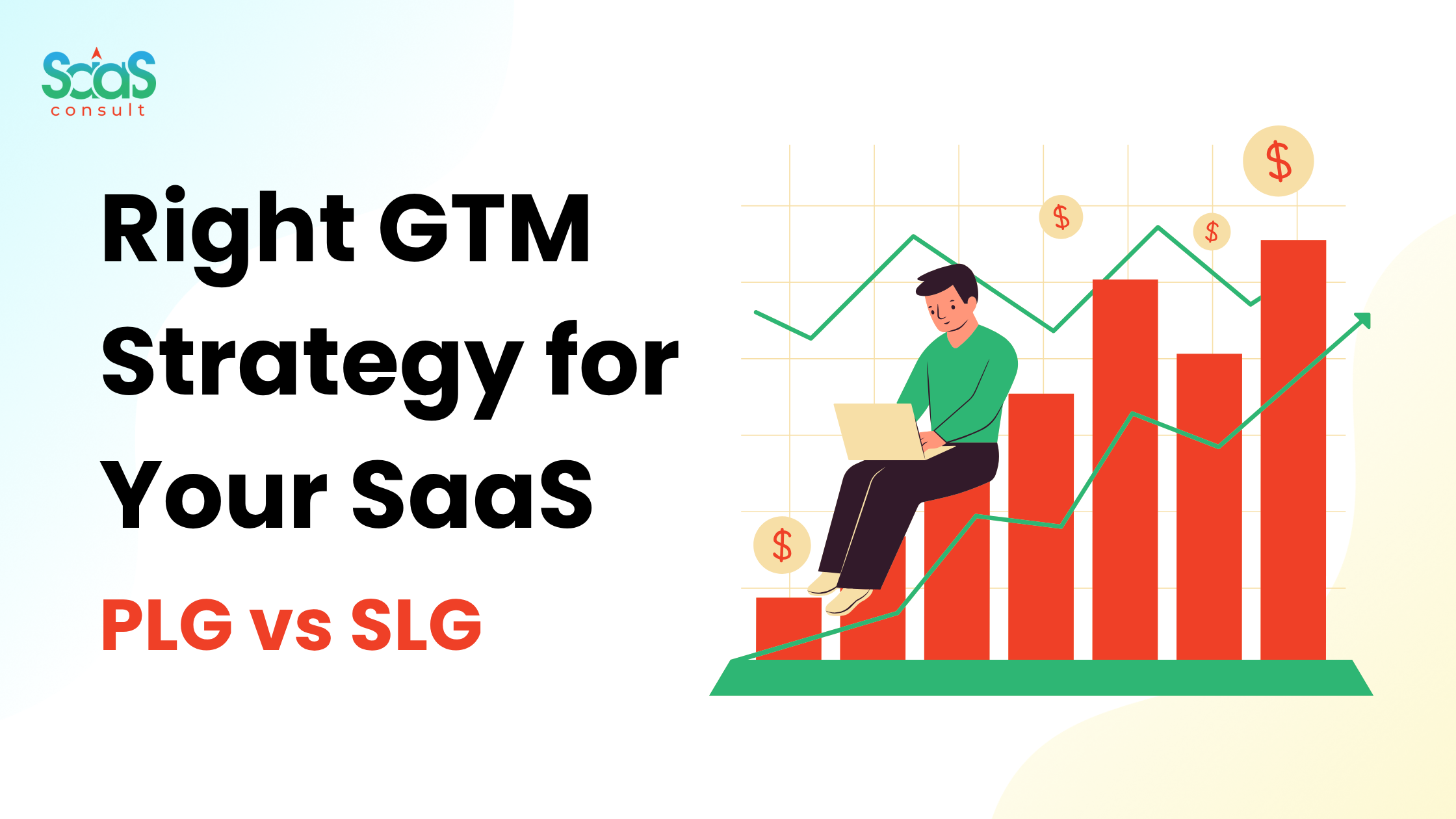Every SaaS startup hits this crossroad: Product-Led Growth (PLG) or Sales-Led Growth (SLG)?
Get it wrong, and you’ll burn cash chasing the wrong funnel. Get it right, and you’ll build a repeatable, efficient GTM engine.
This guide compares PLG and SLG from a go-to-market perspective – covering how they differ in acquisition, conversion, tools, team structure, and when to switch or blend them.
What Is PLG and SLG?
Product-Led Growth (PLG):
Users experience value through the product first – usually via a free trial or freemium. Sales may come later (or not at all).
- Examples: Notion, Figma, ClickUp
- Channels: SEO, communities, integrations, referrals
Sales-Led Growth (SLG):
Outbound or inbound leads are qualified and moved through a traditional sales process (demos, calls, custom pricing).
- Examples: Salesforce, HubSpot (Enterprise), Workday
- Channels: Outbound, events, webinars, ABM, partnerships
Also read: GTM Strategy for SaaS
Core Differences: PLG vs SLG
| Aspect | PLG | SLG |
| Entry Point | Self-serve signups | SDR/demo-led funnel |
| Sales Involvement | Optional, post-signup | Required, early in the funnel |
| Conversion | In-product | Consultative sales process |
| Pricing | Transparent, usage-based | Custom, negotiated |
| Activation Metric | Product usage milestones | Sales meetings and discovery |
| Tools Stack | Product analytics, onboarding UX | CRM, outreach tools, call recorders |
PLG doesn’t mean “no sales.” It means product first, sales later (if needed).
When to Use PLG
You should start with PLG if:
- Your product has a fast time-to-value (users see results in 1–2 sessions)
- It solves a problem users know they have
- The price point is <$100/month per user
- You can track activation and usage clearly
PLG works well when:
- You’re targeting tech-savvy users
- You’re solving workflow or collaboration pain
- Your users can make purchase decisions or influence buying
Recommended tools:
- Product onboarding: Appcues, Userflow
- Analytics: Amplitude, Mixpanel
- Feature gating: LaunchDarkly, GrowthBook
Related: GTM KPIs You Should Track
When to Use SLG
You should start with SLG if:
- You’re targeting mid-market or enterprise
- Your product needs deep onboarding or integrations
- The deal size is >$5K ACV
- Your buyers aren’t the same as users (e.g., HR software)
SLG gives you:
- Clearer control over sales cycle
- Room for deal negotiation and customization
- A way to handle complex objections and procurement hurdles
Tools to support SLG:
Related: Cold Email Strategy for SaaS
Can You Combine PLG and SLG?
Yes — this is called a hybrid GTM model.
Examples:
- Users sign up for a free product -> hit usage limits -> get contacted by sales
- A small team adopts the product -> sales expands to other teams/orgs
Success depends on:
- Tight alignment between product usage and sales triggers
- Defined sales-assist motion
- Clear handoffs between growth and sales teams
Use Marketing Operations to coordinate this cross-functional GTM.
Choosing the Right GTM Motion: 5 Questions to Ask
- Who is your buyer — the end user or execs?
- Can the user experience value without a call?
- What’s your pricing model and ACV?
- Do you need sales to unblock legal, IT, or compliance?
- Is expansion revenue critical (land & expand)?
If most of your answers lean toward:
- Speed, simplicity, usage -> start with PLG
- Process, stakeholders, ACV -> go SLG
Common Mistakes Founders Make
- Assuming PLG is “cheaper” – PLG needs just as much investment (onboarding, product analytics, etc.)
- Starting SLG with a low-ACV product – sales cost will crush your margins
- No clear trigger for switching from PLG to sales – leads sit idle
- No ops setup to track what’s working (see: GTM KPIs)
Final Thoughts
There’s no “better” model — only what fits your product, motion, and stage.
- Start PLG if your product sells itself
- Start SLG if your deals are complex and high-value
- Combine both if usage leads to big expansion
Align your GTM motion with your ICP and CAC goals. Don’t default – decide.
Need help picking or switching GTM motions? Book a call with our GTM team.
